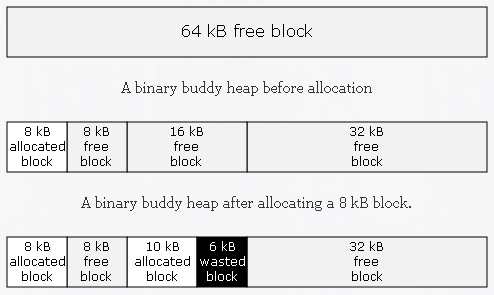Memory allocation techniques used inside the processor

Which are the various memory allocation techniques used? Why are the used? What is the different between the various methods of memory allocation?













